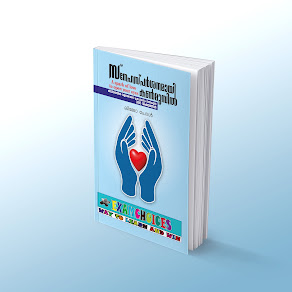Tourism concepts-definitions-historical background;ancient
era,medieval landmarks and modern development;Mass Tourism,Alternate
Tourism,Eco Tourism, Responsible Tourism-Tourists-definitions & Classifications-Impacts
of Tourism;Economic,Social and Environmental Impacts-Tourism System;generating
region,transit region and receiving region-types of tourism;International,domestic,inter
& Intraregional Tourism-Tourism Industry –Nature and Characteristics of
Tourism Industry-Components of Tourism;Attractions-types,importance and
characteristics-Accomodation-types and classification,Accessibility-types
of transportation and importance,Amenties-Stakeholders
in Tourism Industry;Tourist,Business People,Government,NGOs,Communities,Travel
Tour Operators and Others –Roles and Responsibilities-Tourist
Destination;Nature and Characteristics,Components-Destination,Choice
Process:Determining Factors,the Destination Experience of Tourists
(B)TRAVEL GEOGRAPHY OF INDIA
Physical Geographical features of India-Mountains and
Valleys,Forest and Wildlife,CoastalAreas-Deserts,Vegetation,Rivers,Lakes and
Oceans,Climate and Vegetation,Islands-Cultural Geography of
India-Historical events,landmarks and mile
stones-influence of various Invasions on Indian Culture-Social structure and
Divisions of India-Major Destinations in North India,South India,North-Eastern
India,Western India-Locations,Attractions,Accessibility-Major Airports-IATA
Codes-Tourism Resource of India-WildlifeSanctuaries and National Parks-Cultural
tourism resources-Fairsand Festivals-Dance forms and Music-Art and Architecture
and its importance in Tourism development of India-Rail Tourism in India and
Facilities-Heritage Sites(UNESCO Sites)and Attractions
(C)TOURISM GEOGRAPHY RESOURCES OF KERALA
Physical Geographical features of Kerala-Western
Ghats,Rivers and Lakes,Beaches,Mountains and Valleys,Forest and Wildlife,Hill
Stations,Backwaters,Ayurveda Tourism-Cultural and National Tourism
Resources-Art and Architecture-Dance and Music-Fairs and Festivals-Historical
Events-Heritage Sites and Tourism Importance-Major
Destinations-Attractions,Accessibility-Recent Tourism Initiatives-Kerala
Tourism Policy-Role of Department of Tourism-Tourism
Organisations:DTPC,KTDC,BRDC,TRKL etc
PART II.INTRODUCTION TO PUBLIC RELATIONS
Public Relation:Nature,Concept and Definitions-Historical
Perspective-Role of Public Relations Practitioners-Public Relations
Activities-Distinction between:Public
Relations.Propaganda,Advertising,Publicity-Public Opinion:Formulation,Tools for
Winning Public Opinion,Pressure Groups-Process of Public Relations:Public
Relation Officers:Profile of PRO,Work Assignment of Public Relations,Requirements
of Success-Public Relations in Indian public sector-Skill needed for Public
Relations-Public Relation for Communication-Publics in Internal
communication-Objectives of Employee Relations-Building Organizational
Culture-Media for Internal communication-Public Relations for External Public:DefiningPublics,Types
of external public.Media for External Communication-Role of NewTechnology for
Mass Media Communication-Ethics and Public Relations;Code of
Ethics,Professionalism in Public Relation-Planning in Public Relations-Analyzing
and Developing a Public Relation
Strategy-Applications and Tools for
Internal Communications-Tools and Production Techniques for External
Communication:Corporate Brochure and Films.Campaigns and Exhibitions-Dealing
with Media:Organizing Special Events-Media Planning and Relations for Public
Relations-Introduction to Media Planning General Procedures and Problems,Relationship between
Media,Advertising and Consumers-Media and Marketing Planning;Mass
Media,Characteristics and Ownership-Indicators for Selection of Media-Media
Research and Methods-Media Relation;Laying the Ground Work,Reaching Out,Greet
the Press-Changing Face of Media in 21st Century-Technology and
Social Media:Using Social Media,Tools and Techniques-Role of Writing and
Major Challenges in Public Relations-Role
of Writing in Public Relations:Press
Releases & Communique,Backgrounds,Feature Writing inPublic Relations:Press
Releases & Communique,Backgrounds,Feature Writing,Rejoinder Writing,Writing
for Electronic Media,Speech Writing for Corporte Executives,Hints for Writing
Press Release,Handling Press Questions,Principles of TV and Media-Challenges of
Public Relations;Role of Public Relations in National and International
Context,Public Relations for Generating Social Awareness,Building Image of
India abroad,Choice of Media for Relating to Indian Masses-Role of Traditional
Media about Social/National Issues.Community Public Relations
PART III-INTRODUCTION TO BUSINESS COMMUNICATION
Meaning and Importance of Communication-Forms of
Communication:Upward,downward and interactive communication in organizations,Communication
networks:formal or Grapevine/informalcommunication,interpersonal
communication-Types of Communication Verbal communication(written and oral)and
nonverbal-communication(kinesis or body,language and paralanguage)-Barries in
Communications-Communication Skills-Oral Presentation-Tips for Oral
Presentation-Written Presentation:-Interview techniques-Effectivce listening
skills-Reading Skills for Effective Communication-Effective of Changing
Technology-Importance of Effectiveness Communication inTourism
Business-Communication in Tourism Business-Communication on the basis of
Direction-Communication on the basis Direction-Communication on the basis of
Expression-Communication on the basis of
Organizational Structure-Communication Networks,Effects and
Performance-Feedback Defined-The Functions of Feed Back-The process of
Interpersonal-Effectiveness of Feed Back-Written Communications in Business
Organisations-Basics in letter writing:Layouts,Letters of
enquiry,Quotations,Orders,Complaints,Apologies,Requests & Replies,Demy
official letters.Circulars,Letters connected with sales,Press release,Letters
for financial arrangements,Use of Charts,Graphs etc.Report Writing:Basic Formats
and Process ,Types of Reports-Writing E-mails and Memos-Proposals;Types and
Stages of Preparation-Business Meetings and Modern Methods of Communication-Introduction
to Business Meetings-Types and Objectives of Meetings-Essential requirements of
a meeting-writing notices for a
meeting-Minutes of a meeting-Modern
Methods of Communication:Internet,Audio and Visual Aids,Teleconferencing
Major Promotional Tools –Developing and Selecting Effective Communication
Tools-Different types of Medias and its role in Effective Communication-Business
Etiquettes-Business Etiquettes-Initiating Interactions-Dressing for
Work-Enhancing Communication-Using Non-Verbal Cues-Business Conversation-Managing
Appointments-Negotiating with Customers-Entertaining Customers
PART –IV-(A)FACTS ABOUT INDIA
Geography of India-Physical
Features-Climate-Soils-Rivers-Famous Sites-etc Demography-Ecnomic and Social
Development-Poverty Alleviation-Economy and Planning-etc History of
India-Period from 1857 to 1947-National Movement-etc
(B)FACTS ABOUT KERALA
Geographical Facts-Physical
Features-Climate-Soils-Rivers-Famous Sites etc
RENAISSANCE OF KERALA
Important Events /Movements/Leaders
Brahmanada Swami Sivayogi.Chattampi Swami,Sree Narayana
Guru,Vagbhatanara,Thycaud Ayya,Ayya Vaikundar,Poikayil Yohannan(Kumara
Guru),Ayyankali,Pandit Karuppan,Mannathu
Padmanabhan,V.T.Bhattathirippad,Dr.Palpu,Kumaranasan,Vakkom Moulavi,Blessed
Kuriakose Elias Chavara etc.










It is a bad plan that admits of no modification-Publilius Syrus.
ReplyDeleteKERALA PSC ,UPSC Civil service online practices available .Don’t forget our Youtube Channel Subscribe.